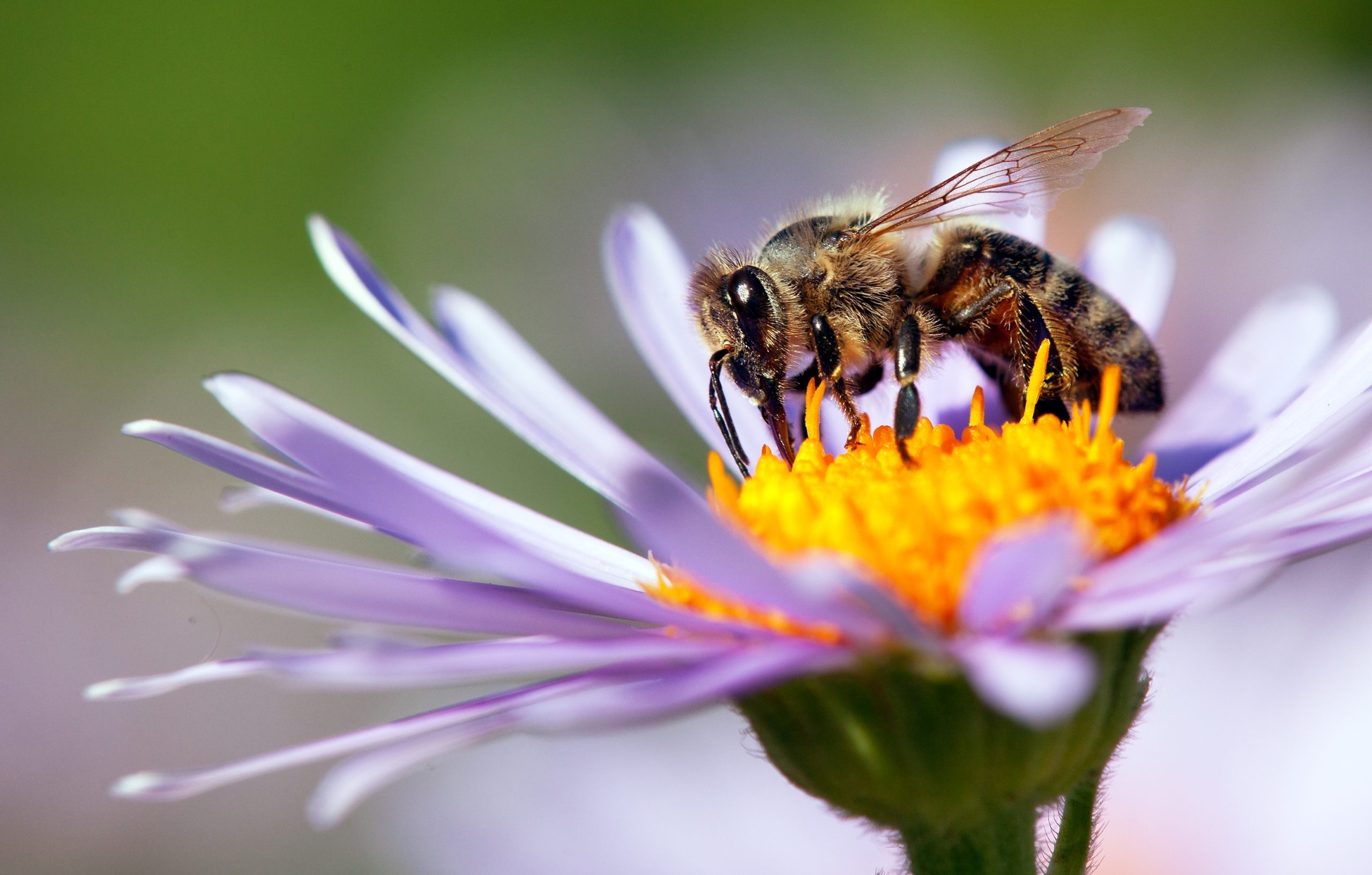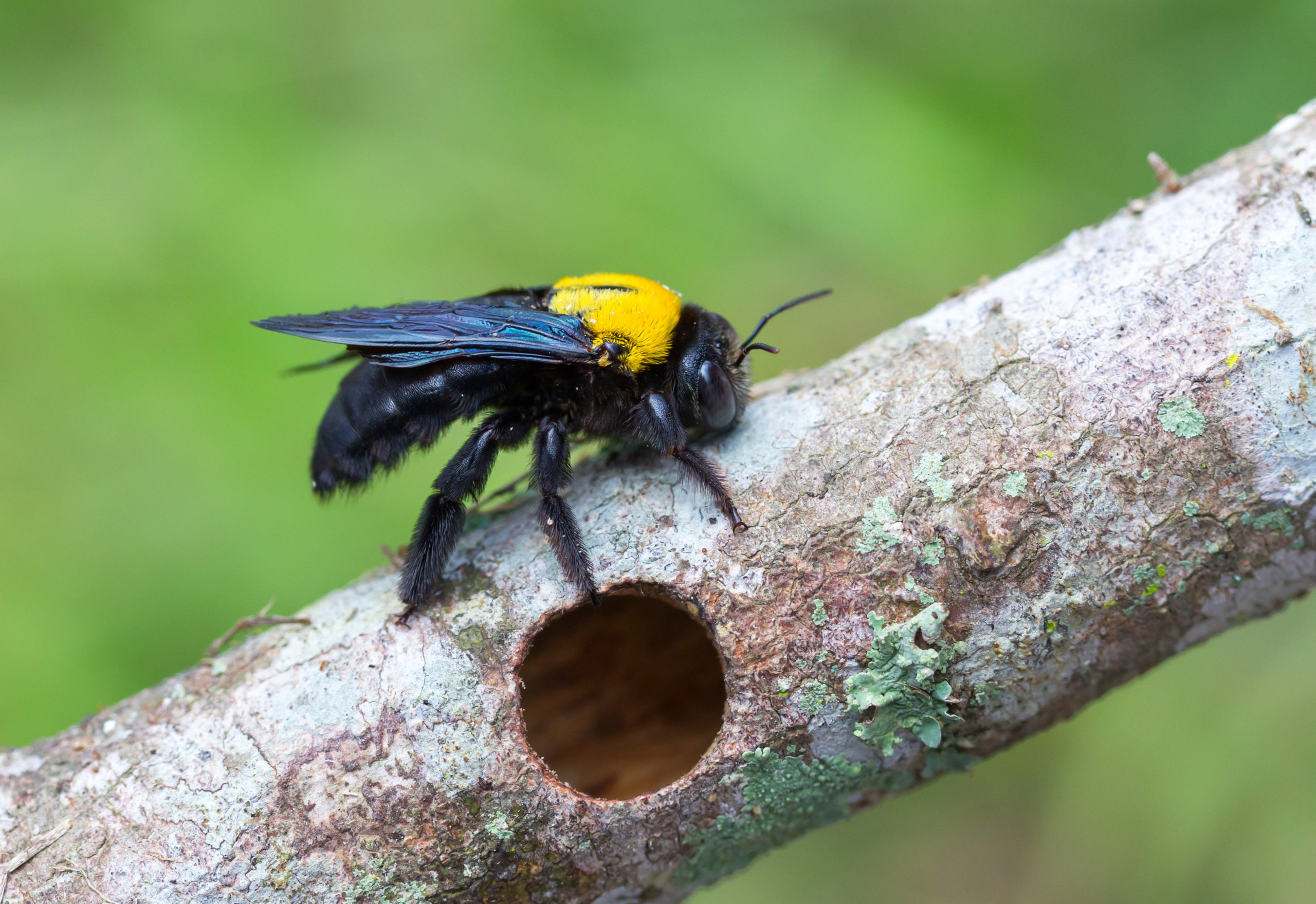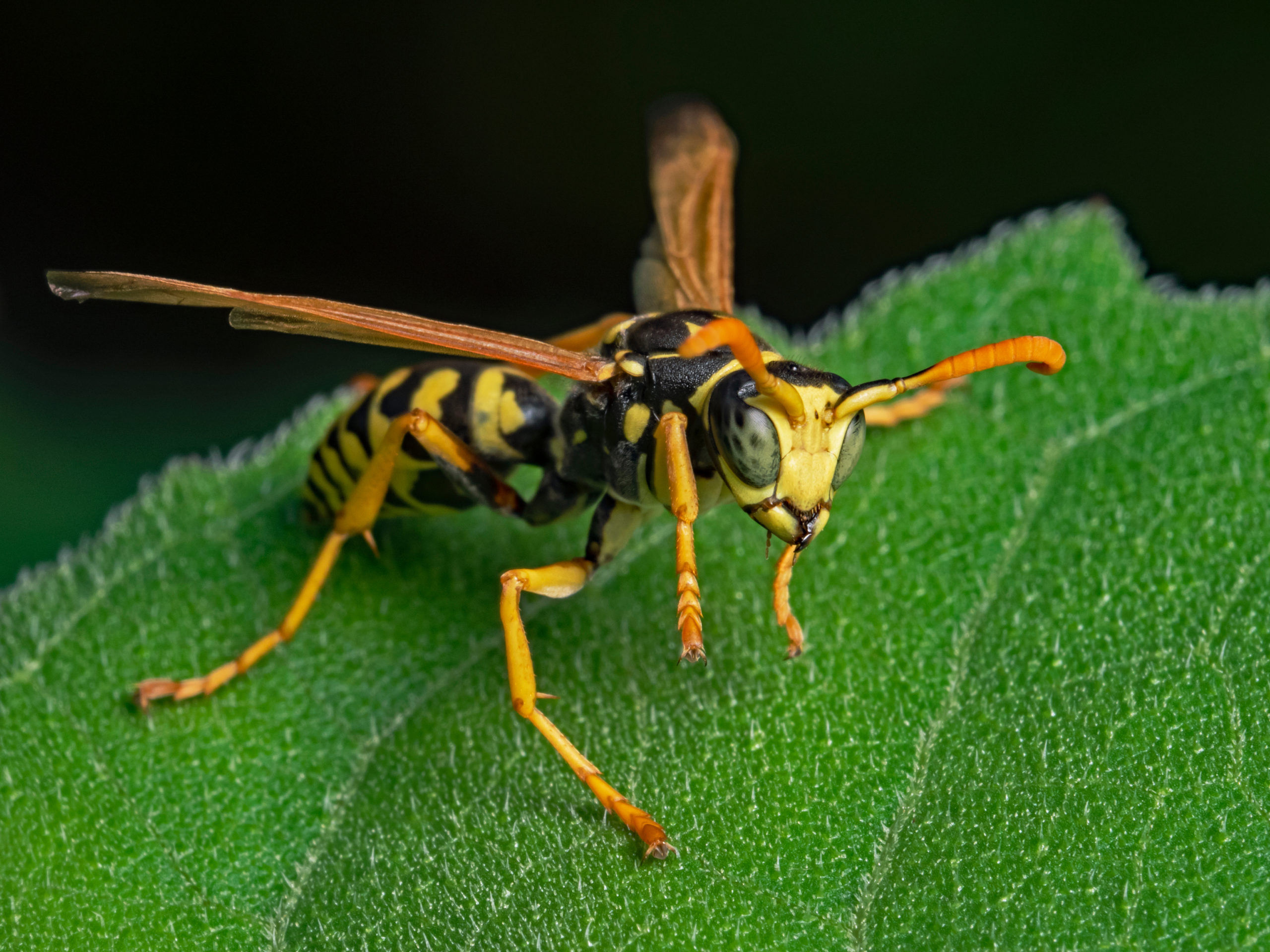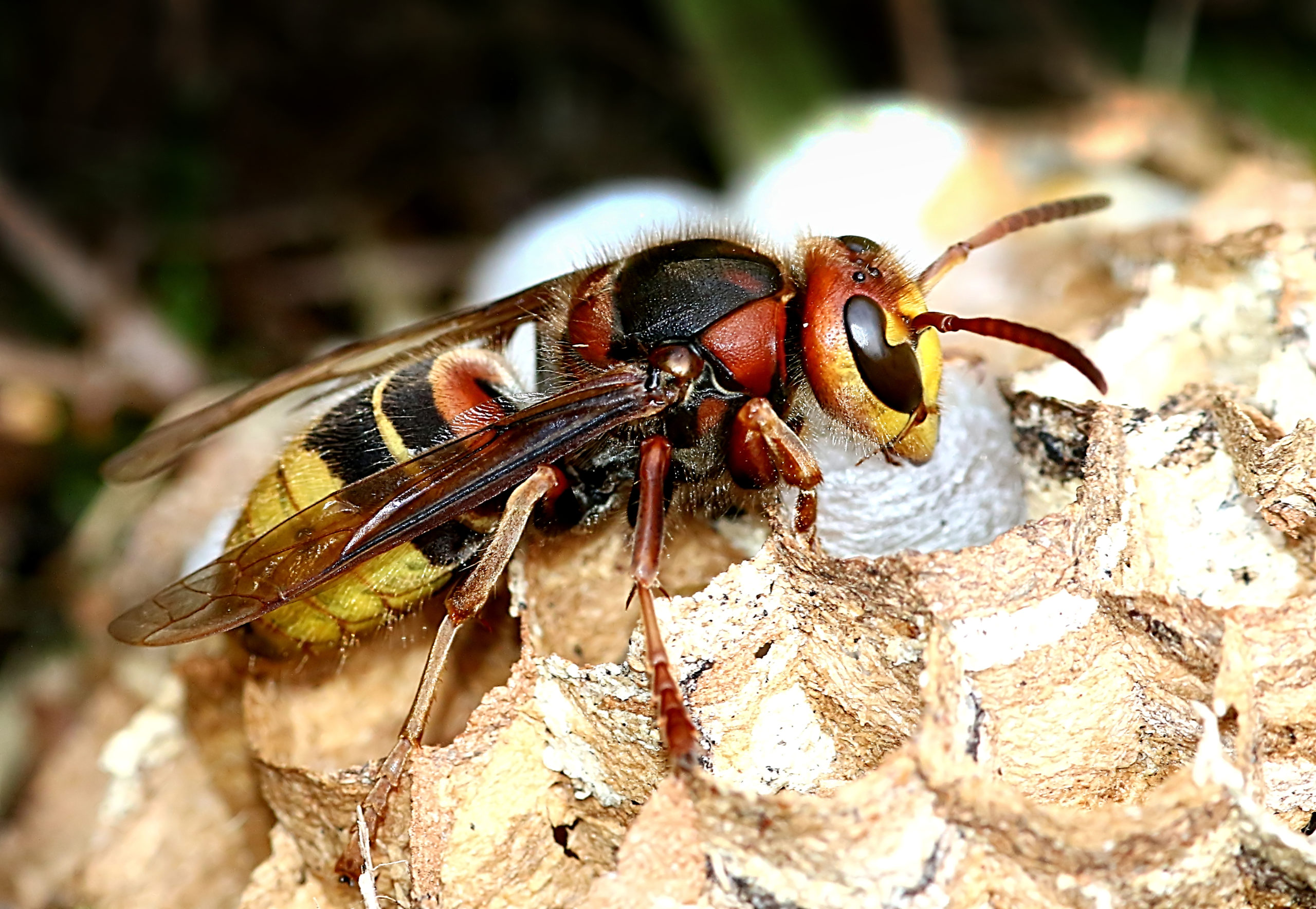Pest Look-Alikes – Part 4
Pest Look-Alikes – Part 4
There are a number of pests that look very similar but are, in fact, very different. In this blog series, we breakdown some of the most commonly confused pests and their differences. Today’s blog covers all of the stinging pests and their differences.
Stinging Pests
Is it just a friendly honeybee, or is it a very territorial and aggressive wasp? Knowing the difference between these creatures can mean the difference between a world of pain and danger.
Wasps and bees are all insects that are part of the Hymenoptera order. They are famous for their abilities to sting and fly, as well as their striking yellow/orange and black striped bodies. Unfortunately, while not all of these species are aggressive, their stings are painful, and they can potentially be fatal to an individual who’s allergic to their venom, so caution should be exercised when dealing with any of the following creatures.
Honeybees
**Honeybees are actually not classified as pests as they play a vital role for the environment by pollinating hundreds of different plants and are generally non-aggressive. This pollination is a fundamental process for the sustainability and survival of the world’s ecosystems. In addition to this major contribution to the planet, honeybees also provide a precious and widely enjoyed commodity to our tables: honey. While they may not be pests, they are included on this list as they are often mistaken for the following Hymenoptera who are pests**
Appearance: These little honey-chefs have smaller striped bodies decorated with little hairs centralized more on their upper abdomens. Their flight patterns are typically very direction-oriented, and their legs are usually tucked up against their bodies, hidden from view.
Colony Size: 20,000 to 80,000 individuals
Nest: Honeybees create miraculously complex nests called honeycombs. Made with near mathematical perfection, the honeycomb is sculpted with striking accuracy and a measurable spatial advantage. These waxy structures with evenly constructed hexagonal compartments. Each of the edges of the hexagons are roughly 0.1 mm thick and are arranged into an exact 120° angle. Not only is this geometry incredibly impressive, but it is extremely beneficial for the storage of honey and efficiency of hive space overall. Hexagons can fit together with one another without leaving any gaps or requiring more wax to sustain the shapes. Since the hexagons share walls with one another and are packed so tightly together, they form a strong usable structure without wasting any materials or space.
Aggression: Unlike their cousins’ wasps, yellow jackets, and hornets, honeybees are considered exceedingly docile creatures that attack only when they believe that their colony, or their own person, is in mortal danger. The stingers of honeybees are barbed and while that is not a problem when stinging other insects, skin is far too tough for their stingers to be removed by flying away. Instead, when the bee, takes off, tugging their body against the resistance of the stinger, the stinger will remain in the victim’s skin, ripping out of the bee. Unfortunately for the bee, it’s not only the stinger that goes. The abdomen of the bee is torn open, revealing, and leaving behind the venom sack (which is attached to the stinger) along with some muscles, part of its digestive tract, and nervous system. This dismantling of the bee’s abdomen kills them and is why bees are known for only being able to sting once.

Bumblebees
Appearance: Out of all of the Hymenoptera order, these guys are typically considered the cutest, as well as friendliest. They are large with rounded, fuzzy bodies decorated with yellow and black stripes. During flight, they seem to move almost drunkenly through the air and will allow their legs to hang down lazily.
Colony Size: 50 to 500 individuals
Nest: Because the term “bumblebee” actually covers so many different subspecies, bumblebee nests can vary quite a bit, although most commonly they are found on ground level. Sometimes, bumblebees will burrow to form nests similar to yellowjackets, while others will find hollowed out logs, piles of branches/foliage, or other low structures to inhabit for shelter.
Occasionally, clusters of what looks similar to barnacles made of beeswax can be seen on the ground – they appear far less structured than the nests of their distant cousins the honeybees and are often very lumpy and disorganized.
Aggression: Bumblebees are very docile creatures and, while they have the ability to sting, they very rarely become aggressive and attack. They do possess the ability to sting multiple times however, this only occurs when they feel threatened.

Carpenter Bees
Appearance: These bees are a bit heftier in size compared to honeybees and are sometimes mistaken for their cousins the bumblebees. In fact, they are the second largest native bees in the United States, just behind bumblebees. However, unlike bumblebees who have fine hairs all over their bodies, the yellow hairs that they sometime have on their thorax are somewhat patchy, while their abdomens seem to lack any fur, and are a shiny black color.
Colony Size: Carpenter bees are not social insects and do not form colonies. Female carpenter bees mate and form nests of their own which their offspring hatch from.
Nest: Mated female bees bore into wooden structures, creating a series of tunnels that act as her home and nesting area. The entry point is typically a hole spanning roughly half an inch in diameter which stretches back several inches before partitioning off into different tunnels and chambers along the wood grain. These different galleries can run from roughly six inches long to even longer than a foot. Occasionally different bees will share an entrance into a wooden structure, but branch off to their own chambers, living separate from one another as opposed to operating as a colony.
Aggression: Fortunately, these bees are not known for being aggressive. Male carpenter bees even lack the ability to sting and will simply hover nearly their nests, sometimes causing people some unnecessary worries. While the females are capable of stinging, it’s rare, and typically only occurs after extreme provocation such as being physically handled.

Paper Wasps
Appearance: Paper wasps have yellow and black striped bodies with long, thin abdomens. They look very similar to yellow jackets, however, paper wasps have more black on their bodies and a thinner, longer body. Notably, they also have an additional color to their overall hue – orange. This color is displayed on their legs and brightly on the tips of their antennae’s, distinguishing themselves from their other family members. During flight, paper wasps also have somewhat of a lazy appearance as they unceremoniously allow their long legs to dangle beneath them as they glide through the air
Colony Size: 20 to100 individuals
Nest: These nests are typically constructed under decks, or on the eaves of a home. They are shaped like umbrellas with hexagonal cells facing downward.
Aggression: These wasps are well known for being aggressive, predatory, and very territorial. In fact, if their nest happens to be destroyed, they often return to rebuild it in the exact same spot. Due to their territorial nature, they are extremely unfond of people getting close to their nests and have a tendency to attack if they feel you’ve gotten within a certain range or if they think you may be a threat. Not only can paper wasps sting, but they have powerful and painful bites. They can sink their powerful mandibles into victims and simultaneously sting them, multiple times. Unlike honeybees who lose their barbed stingers and die after the encounter, wasps have smooth stingers that remain intact and can be used over and over. Furthermore, these striped stingers have acutely painful venom that they inject with each stab into their victim.

Yellow Jackets
Appearance: Yellow jackets and paper wasps appear exceedingly similar, but yellow jackets can be distinguished by three key differences: their bodies are slightly more robust, their antennae and legs are black, and, when in flight, yellow jackets tuck their legs up against their body as they fly, making them arrow dynamic and quick.
Colony Size: 2,800 to 5,000 individuals
Nest: Yellow jackets prefer to burrow into the ground or slip into cracks in the outer walls of your home. They build their nests inside these other structures, creating hidden hives. The best sign that you are dealing with yellowjackets as opposed to another type of wasp, is by observing the insects darting into the ground and along walls, never congregating around a perch where a nest might be in the process of being built.
Aggression: Yellow jackets are one of the most common culprits when it comes to being stung in your own backyard as they are highly aggressive and territorial insects. They have been known to sting unprovoked and are prone to swarming if approached. When they attack, yellow jackets tend to sting repeatedly with their venomous stingers and will even bite their victims. Their aggression tends to spike in the months of Autumn and reports of stings increase at this time. Executive member of the Montgomery Country Beekeepers’ Association of Pennsylvania, Scott Famous, states that, “when the weather turns colder, food sources disappear and [the yellow jackets] begin to starve. Starvation makes them angry and aggressive as they work hard to seek food.”

Hornets
Appearance: Hornets are generally the largest of all the different kinds of Vespidae (a category of wasps within the Hymenoptera order). These pests also often have orange and red tones on their bodies, as well as noticeably large mandibles. Like yellow jackets, they also have slightly thicker midsections that help distinguish them from paper wasps.
Colony Size: 100 to 700 individuals
Nest: Hornets tend to make their nests on large trees or along the siding of a home. These nests are much larger than their paper wasp counterparts and are often shaped like a large football. The outer walls of the nest appear smooth and overlap one another with openings at various heights along these structures, creating caverns into the nest.
Aggression: Hornets are actually known for being one of the most laid-back types of wasps that you may encounter. They aren’t inherently aggressive, nor are they very territorial and outside of their nests, hornets are rather passive insects. However, if their nest is disturbed or they feel threatened by your actions or extreme proximity to their colony, hornets can attack with unrelenting force. As such, it is important to steer clear of any nests you can see and leave the nest removal to pest control professionals.

Citations
The 3 Coolest Things Built by Bugs (2013) YouTube. SciShow. Available at: https://www.youtube.com/watch?v=I8fLnDbWkg&list=PLB3FCEEAC84884760&index=78 (Accessed: June 2020).
Ambrose, K. (2019) Yellow Jackets: Fall’s Fearsome and Feisty Wasps that can Sting Repeatedly, The Washington Post. Available at: https://www.washingtonpost.com/weather/2019/11/09/yellow-jackets-falls-fearsome-feisty-wasps-that-can-sting-you-repeatedly/ (Accessed: September 2020).
Bees and Wasps (no date) Illinois Department of Public Health. Available at: https://www.dph.illinois.gov/topics-services/environmental-health-protection/structural-pest-control/bees-wasps (Accessed: May 21, 2021).
Bradford, A. (2017) Facts About Bumblebees, Live Science. Available at: https://www.livescience.com/57509-bumblebee-facts.html (Accessed: August 2020).
Buchman, S. (no date) Carpenter Bees (Xylocopa spp.), U.S. Forest Service. The United States Department of Agriculture. Available at: https://www.fs.fed.us/wildflowers/pollinators/pollinator-of-the-month/carpenter_bees.shtml (Accessed: January 26, 2021).
Bumblebees vs. Honeybees: What’s the Difference, and Why Does it Matter? (no date) The Student Conservation Association. Available at: https://www.thesca.org/connect/blog/bumblebees-vs-honeybees-what’s-difference-and-why-does-it-matter (Accessed: October 2020).
Carpenter Bees (2014) University of California Agriculture and Natural Resources. Integrated Pest Management Program. Available at: https://ipm.ucanr.edu/PMG/PESTNOTES/pn7417.html (Accessed: January 26, 2021).
The Differences Between Bumblebees and Honeybees (no date) Bumblebee Conservation Trust. Available at: https://www.bumblebeeconservation.org/bee-faqs/honeybees-vs-bumblebees/ (Accessed: October 2020).
EPA Actions to Protect Pollinators (2021) EPA. Environmental Protection Agency. Available at: https://www.epa.gov/pollinator-protection/epa-actions-protect-pollinators (Accessed: May 21, 2021).
Gillespie, C. (2018) What is the Life Span of a Honey Bee? , Sciencing. Available at: https://sciencing.com/life-span-honey-bee-6573678.html (Accessed: October 2020).
Hornets (no date) National Geographic. Available at: https://www.nationalgeographic.com/animals/invertebrates/facts/hornets (Accessed: March 19, 2021).
Hornets: Facts About Hornets (no date) The RSPB. Available at: https://www.rspb.org.uk/birds-and-wildlife/wildlife-guides/other-garden-wildlife/insects-and-other-invertebrates/bees-wasps-ants/hornet/ (Accessed: March 19, 2021).
Is it a Honeybee, a Bumblebee or a Wasp? (2019) Bee Loved. Available at: https://www.beeloved.co.uk/buzzfeed-1/2016/6/21/is-it-a-honeybee-a-bumblebee-or-a-wasp (Accessed: October 2020).
Jacobs, S. (2017) Carpenter Bees, Penn State Extension. Pennsylvania State University College of Agricultural Sciences. Available at: https://extension.psu.edu/carpenter-bees (Accessed: January 26, 2021).
Kearney, H. (2019) Comparing Bumblebees with Honeybees, Keeping Backyard Bees. Available at: https://www.keepingbackyardbees.com/comparing-bumble-bees-with-honey-bees-zbwz1909zsau/ (Accessed: October 2020).
Landolt, P. and Antonelli, A. Yellowjackets and Paper Wasps, Washington State University.
WSU Puyallup Research and Extension Center. Available at: https://s3.wp.wsu.edu/uploads/sites/1384/2016/07/Yellojackets-and-Paper-Wasps.pdf (Accessed: May 2020).
Masters, M. (no date) Difference Between Bumblebees and Honeybees, Pets on Mom. Available at: https://animals.mom.com/differences-between-bees-nests-hives-9663.html (Accessed: October 2020).
Ricciuti, E. (2019) Yellowjackets: A Look at Opportunistic Raiders of Honey Bee Hives, Entomology Today. The Entomological Society of America. Available at: https://entomologytoday.org/2019/03/28/yellowjackets-opportunistic-raiders-honey-bee-hives/ (Accessed: October 2020).
Vogt, C. (2018) Types of Wasps That Are Very Aggressive, Sciencing. Available at: https://sciencing.com/types-of-wasps-12365156.html (Accessed: September 2020).
Waldvogel, M. and Alder, P. (2018) Carpenter Bees, NC State Extension Publications. North Carolina State University Department of Entomology and Plant Pathology. Available at: https://content.ces.ncsu.edu/carpenter-bees (Accessed: January 26, 2021).
Why Do Honey Bees Die After They Sting You? (2011) Earth Sky. Available at: https://earthsky.org/earth/why-do-bees-die-after-they-sting-you (Accessed: August 2020).
8 Creative Ways to Have a Pest-Free Fourth of July
8 Creative Ways to Have a Pest-Free Fourth of July 8 Creative Ways to Have a Pest-Free Fourth of July Summary: The Fourth [...]
A Simple Guide to Preventing Stinging Pests
A Simple Guide to Preventing Stinging Pests A Simple Guide to Preventing Stinging Pests Summary: Stinging insects are more active in warm weather, [...]
These 10 Natural Mosquito Repellents Can Actually Help
These 10 Natural Mosquito Repellents Can Actually Help These 10 Natural Mosquito Repellents Can Actually Help Summary: Natural mosquito repellents are easier to [...]
How to Get Rid of Carpet Beetles
How to Get Rid of Carpet Beetles How to Get Rid of Carpet Beetles Summary: Carpet beetles are sneaky pests that don’t usually [...]
How Do Roaches Affect Asthma and Allergies?
How Do Roaches Affect Asthma and Allergies? How Do Roaches Affect Asthma and Allergies? Summary: It’s no secret that pests impact human health, [...]
These 5 Carnivorous Pests Might Surprise You!
These 5 Carnivorous Pests Might Surprise You! These 5 Carnivorous Pests Might Surprise You! Summary: There are many eco-friendly ways to prevent pests, [...]

